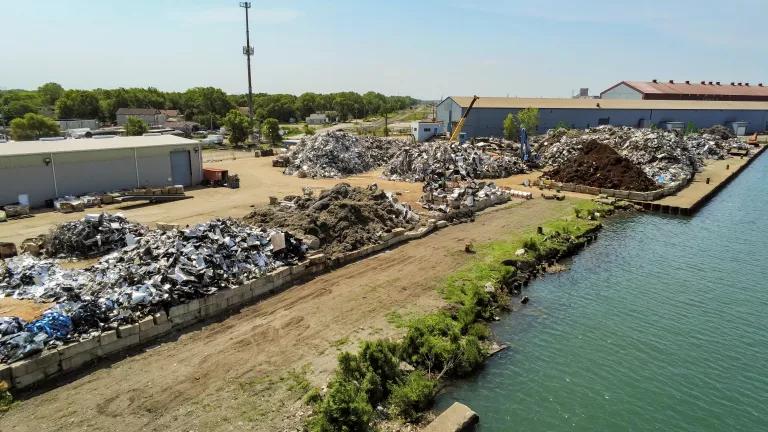Prioritizing Environmental Justice in Chicago

Mayor Lightfoot’s promise to reinstitute the Department of the Environment brought hope to families living near Chicago’s most dangerous polluters. Many saw the promise of a revival of the department as a necessary step in addressing the city’s worst environmental problems and the health risks caused by industry.
Although the Mayor Lightfoot announced a shift to a new Office of Environment and Sustainability in 2020 during her budget address, the City doesn’t need to wait to address Chicago’s most urgent environmental issues.
While the Department of the Environment was around it was a crucial part of city government that kept polluters accountable, but it wasn’t perfect. As a third generation Southeast Sider, living in a very industrial part of town, I recognize the importance of having a City agency solely focused on protecting Chicagoans from environmental threats. However, Chicago’s environmental problems—like many of the city’s issues—are tied to inequality that has developed over decades.
Chicago’s industrial legacy that once sustained much of the city’s workforce today continues to be a burden on working class communities of color, like the one I live in. The toxic chemicals that these facilities spew out as they go about their daily business are a constant and unescapable threat to residents as they go about their daily lives, since many of these facilities are close to homes, schools, and parks. These same residents have the least access health care and are particularly vulnerable to the burdens of multiple environmental threats.
A reorganized environmental branch of City government could take on many forms but doesn’t necessarily have to be a revival of the department that Rahm’s administration cut. The core focus, however, must be on environmental justice for the city’s most vulnerable residents.
South and West Side residents depend on City government to police industrial facilities that release carcinogens, neurotoxins, or other toxic chemicals that have long-lasting effects, especially on children. As the Trump administration continues to roll back essential protections for our health and environment, it is clear the City needs to step up.
Here are some steps the City can take immediately to address environmental issues:
- Increase fines on the city’s worst polluters.
- Hire more inspectors to enforce the rules.
- Fix inaccessible, broken permitting and zoning processes to take into account public health and the accumulation of dirty industry in particular communities.
- Give residents more say in the process for rewriting and implementing environmental and land use laws.
- Stop the most dangerous polluters from operating in city limits.
- Prioritize the most vulnerable communities for sustainable developments, not polluting industries like warehouses and asphalt plants.
The list can go on. However, the most effective City actions will have to take a hammer to the pillars that prop up a system built on years of inequity. That system has led to an accumulation of industry in vulnerable communities.
The industrial corridors of the North Side and around the Loop are shedding polluting facilities and are attracting developments like apartment buildings and shopping centers. The South and West Side, on the other hand, are being primed for more dirty industry, with the City taking a direct role in enabling this shift.
Residents are also often shut out of the City’s process that determines permitting and zoning for industry. Chicagoans have little say about the dangerous polluters that occupy land near residential areas. If these rules stay the same, residents will continue to play whack-a-mole in dealing with polluters and the health threats that they create.
Making meaningful progress in addressing the inequalities that industrial pollution adds to the Chicago’s most vulnerable residents can happen before we determine the structure of a new agency.
A Chicagoan’s health doesn’t have to continue to be determined by where we live. City government can address Chicago’s most severe environmental issues and can do so starting today.



